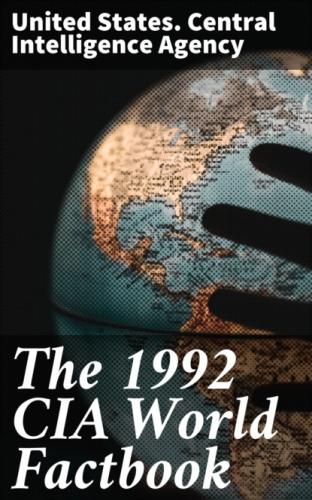previous bicameral legislature has been abolished
Judicial branch:
an interim Chief Justice of the Supreme Court has been appointed, but a new
court system has not yet been organized
Leaders:
Chief of State and Head of Government:
Interim President Burhanuddin RABBANI; First Vice President Abdul Wahed
SORABI (since 7 January 1991); Prime Minister Fazil Haq KHALIQYAR (since 21
May 1990)
Political parties and leaders:
the former resistance parties represent the only current political
organizations and include Jamiat-i-Islami (Islamic Society), Burhanuddin
RABBANI; Hizbi Islami-Gulbuddin (Islamic Party), Gulbuddin Hikmatyar
Faction; Hizbi Islami-Khalis (Islamic Party) Yunis Khalis Faction;
Ittihad-i-Islami Barai Azadi Afghanistan (Islamic Union for the Liberation
of Afghanistan), Abdul Rasul SAYYAF; Harakat-Inqilab-i-Islami (Islamic
Revolutionary Movement), Mohammad Nabi MOHAMMADI; Jabha-i-Najat-i-Milli
Afghanistan (Afghanistan National Liberation Front), Sibghatullah MOJADDEDI;
Mahaz-i-Milli-Islami (National Islamic Front), Sayed Ahamad GAILANI;
Jonbesh-i-Milli Islami (National Islamic Movement), Ahmad Shah MASOOD and
Rashid DOSTAM; Hizbi Wahdat (Islamic Unity Party), and a number of minor
resistance parties; the former ruling Watan Party has been disbanded
Suffrage:
undetermined; previously universal, male ages 15-50
Elections:
the transition government has promised elections in October 1992
Communists:
the former ruling Watan (Homeland) Party has been disbanded
:Afghanistan Government
Other political or pressure groups:
the former resistance commanders are the major power brokers in the
countryside; shuras (councils) of commanders are now administering most
cities outside Kabul; ulema (religious scholars); tribal elders
Member of:
Has previously been a member of AsDB, CP, ESCAP, FAO, G-77, IAEA, IBRD,
ICAO, IDA, IDB, IFAD, IFC, ILO, IMF, INTELSAT, IOC, ITU, LORCS, NAM, OIC,
UN, UNCTAD, UNESCO, UNIDO, UPU, WFTU, WHO, WMO, WTO; note - the new
government has not yet announced whether it will continue to be a member of
these bodies; the former resistance government in exile (Afghan Interim
Government) was given membership in the OIC in 1989
Diplomatic representation:
previous Minister-Counselor, Charge d'Affaires Abdul Ghafur JOUSHAN;
Chancery at 2341 Wyoming Avenue NW, Washington, DC 20008; telephone (202)
234-3770 or 3771; a new representative has not yet been named
US:
Charge d'Affaires (vacant); Embassy at Ansari Wat, Wazir Akbar Khan Mina,
Kabul; telephone 62230 through 62235 or 62436; note - US Embassy in Kabul
was closed in January 1989
Flag:
a new flag of unknown description reportedly has been adopted; previous flag
consisted of three equal horizontal bands of black (top), red, and green,
with the national coat of arms superimposed on the hoist side of the black
and red bands; similar to the flag of Malawi, which is shorter and bears a
radiant, rising red sun centered in the black band
:Afghanistan Economy
Overview:
Fundamentally, Afghanistan is an extremely poor, landlocked country, highly
dependent on farming (wheat especially) and livestock raising (sheep and
goats). Economic considerations, however, have played second fiddle to
political and military upheavals during more than 13 years of war, including
the nearly 10-year Soviet military occupation (which ended 15 February
1989). Over the past decade, one-third of the population fled the country,
with Pakistan sheltering more than 3 million refugees and Iran about 1.3
million. Another 1 million probably moved into and around urban areas within
Afghanistan. Although reliable data are unavailable, gross domestic product
is lower than 12 years ago because of the loss of labor and capital and the
disruption of trade and transport.
GDP:
exchange rate conversion - $3 billion, per capita $200; real growth rate 0%
(1989 est.)
Inflation rate (consumer prices):
over 90% (1991 est.)
Unemployment rate:
NA%
Budget:
revenues NA; expenditures NA, including capital expenditures of NA
Exports:
$236 million (f.o.b., FY91 est.)
commodities:
natural gas 55%, fruits and nuts 24%, handwoven carpets, wool, cotton,
hides, and pelts
partners:
mostly former USSR
Imports:
$874 million (c.i.f., FY91 est.)
commodities:
food and petroleum products
partners:
mostly former USSR
External debt:
$2.3 billion (March 1991 est.)
Industrial production:
growth rate 2.3% (FY91 est.); accounts for about 25% of GDP
Electricity:
480,000 kW capacity; 1,450 million kWh produced, 90 kWh per capita (1991)
Industries:
small-scale production of textiles, soap, furniture, shoes, fertilizer, and
cement; handwoven carpets; natural gas, oil, coal, copper
Agriculture:
largely subsistence farming and nomadic animal husbandry; cash products -
wheat, fruits, nuts, karakul pelts, wool, mutton
Illicit drugs:
an illicit producer of opium poppy and cannabis for the international drug
trade; world's second-largest opium producer (after Burma) and a major
source of hashish
Economic aid:
US commitments, including Ex-Im (FY70-89), $380 million; Western (non-US)
countries, ODA and OOF bilateral commitments (1970-89), $510 million; OPEC
bilateral aid (1979-89), $57 million; Communist countries (1970-89), $4.1
billion; net official
